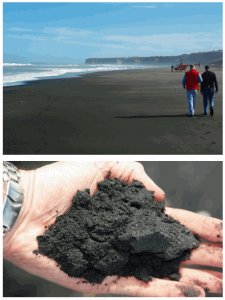Options for removing TiO2 from iron sands
by Michael Hepworth
(Toronto)

Q :What are the options for removing TiO2 from magnetite rich iron sands?
A : The mineral that you’re talking about is scientifically called Titan ferrous Magnetite, with the chemical formula Fe2+ (Fe3+, Ti) 2O4. The essential elements composing this mineral are iron and oxygen, and not titanium. The grades reported in this type of deposits are sub-economic, ranging from 9.8 to a maximum of 20 percent TIO2. The classical titanium bearing minerals such as rutile or ilmenite have more than 60 percent TIO2 content. 40 percent titanium dioxide content is already considered sub-optimal and exploitation of such deposits is decided after extensive economical analysis and in special conditions in order to fundament an economical basis.
However, since titanium is a strategic material, even in the form of titanium dioxide, there have been some attempts of obtaining it form this type of mineral. Physical beneficiation to concentrate ilmenite, the principal mineral of titanium, from this ore is virtually impossible, as ilmenite minerals are present in variable shapes and sizes.
The alternative is to attempt a plasma smelting method to produce TiO2 rich slag (from which titanium can be extracted), pig iron and Fe-Ti-C composite. Fine magnetite powder with petroleum coke is directly smelted in a plasma reactor where, as for preparation of Fe-Ti-C composite, fine magnetite powder, thoroughly mixed with the requisite amount of activated charcoal, is pelletized and treated in argon plasma in a graphite crucible covered with a graphite lid. The result is a Ti-rich slag with 83% TiO2 content and Fe-Ti-C composite, a highly valued by-product.
Theoretically, refining pure titanium dioxide can be achieved by the same traditional chlorination methods, though, due to the low titanium dioxide content, the process requires higher temperatures than with standard content titanium ores. This presents additional problems that have yet to be resolved by a viable economic solution.







